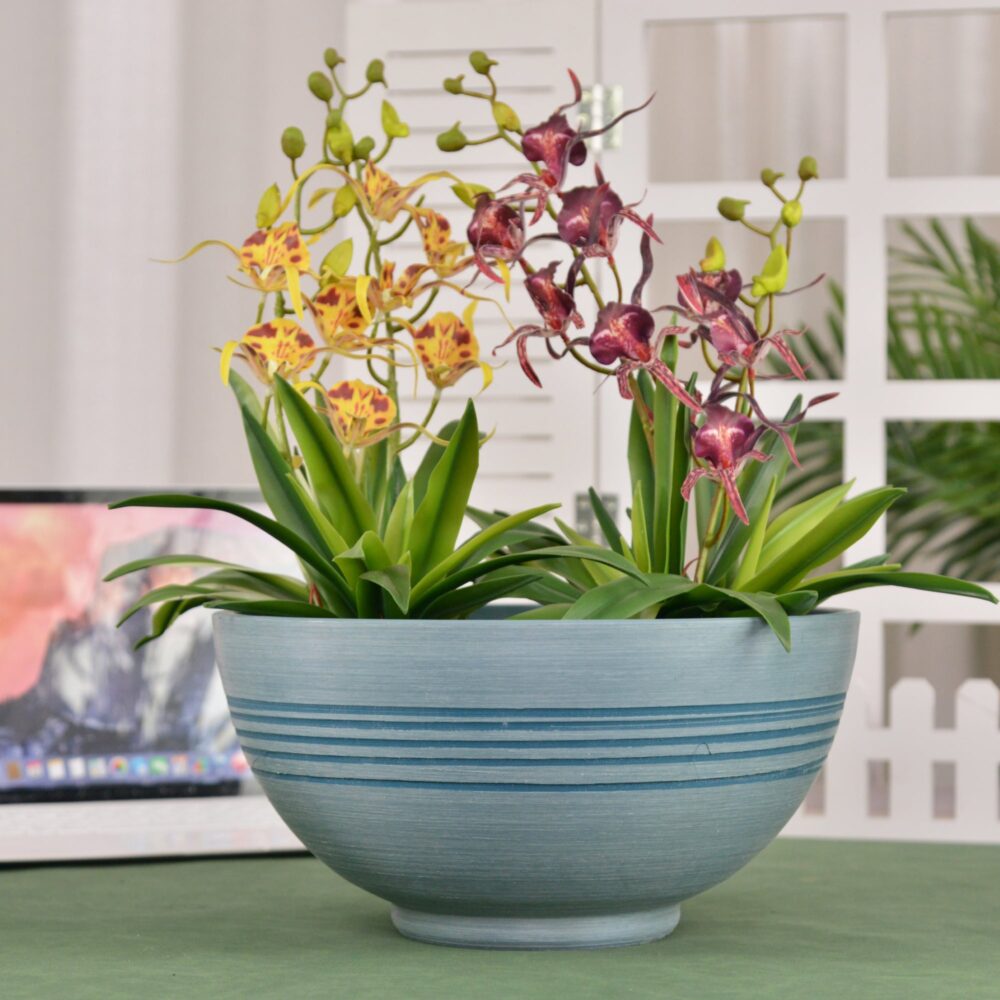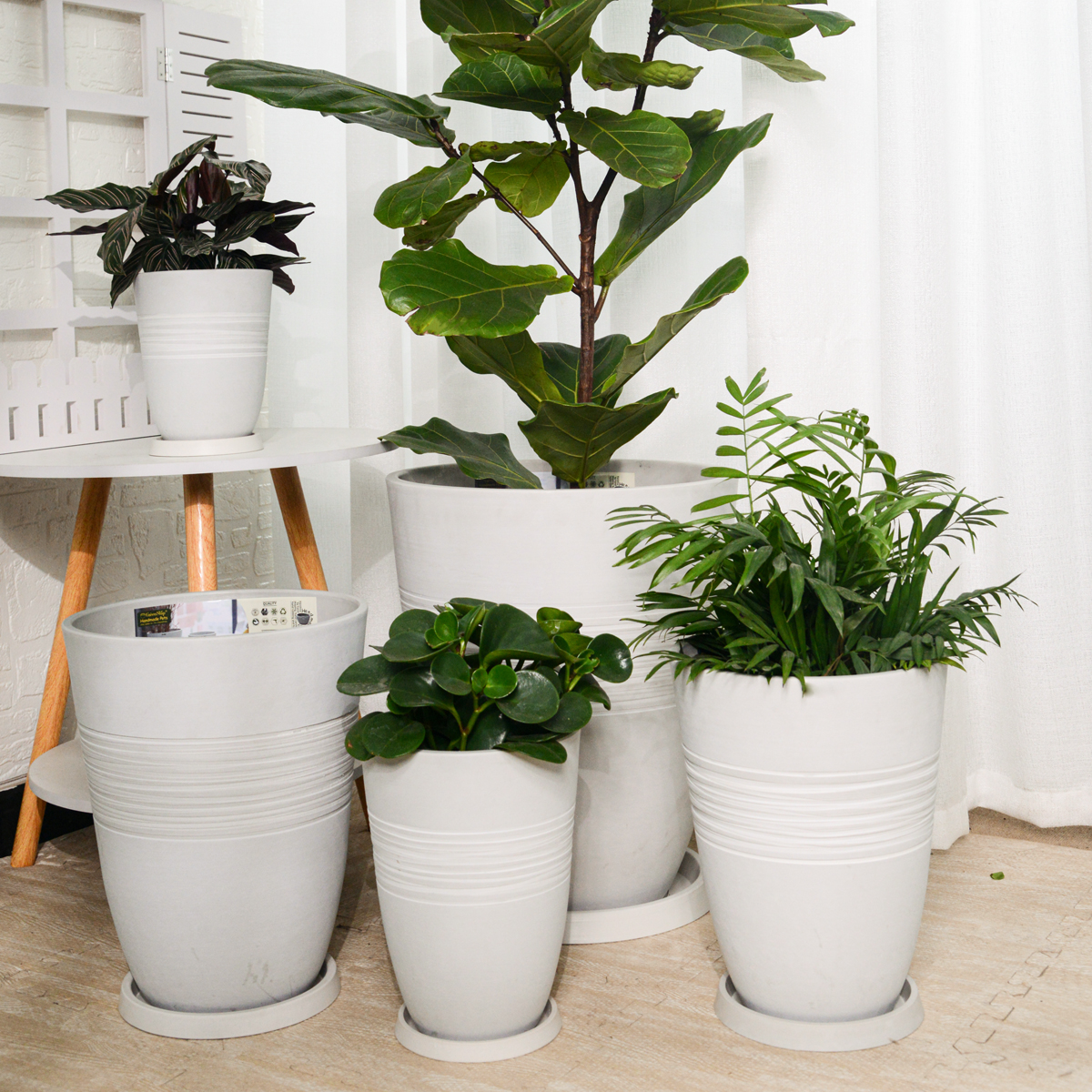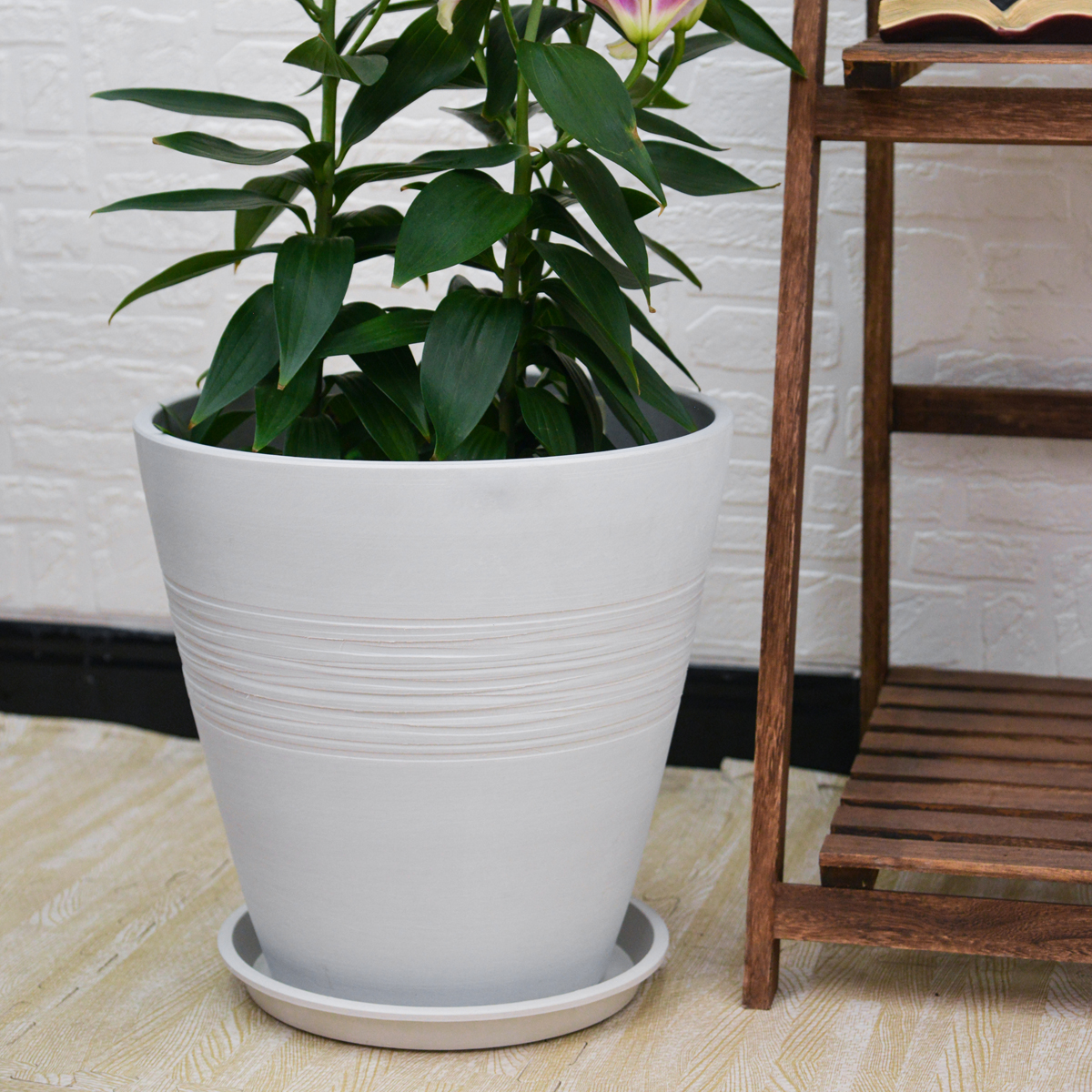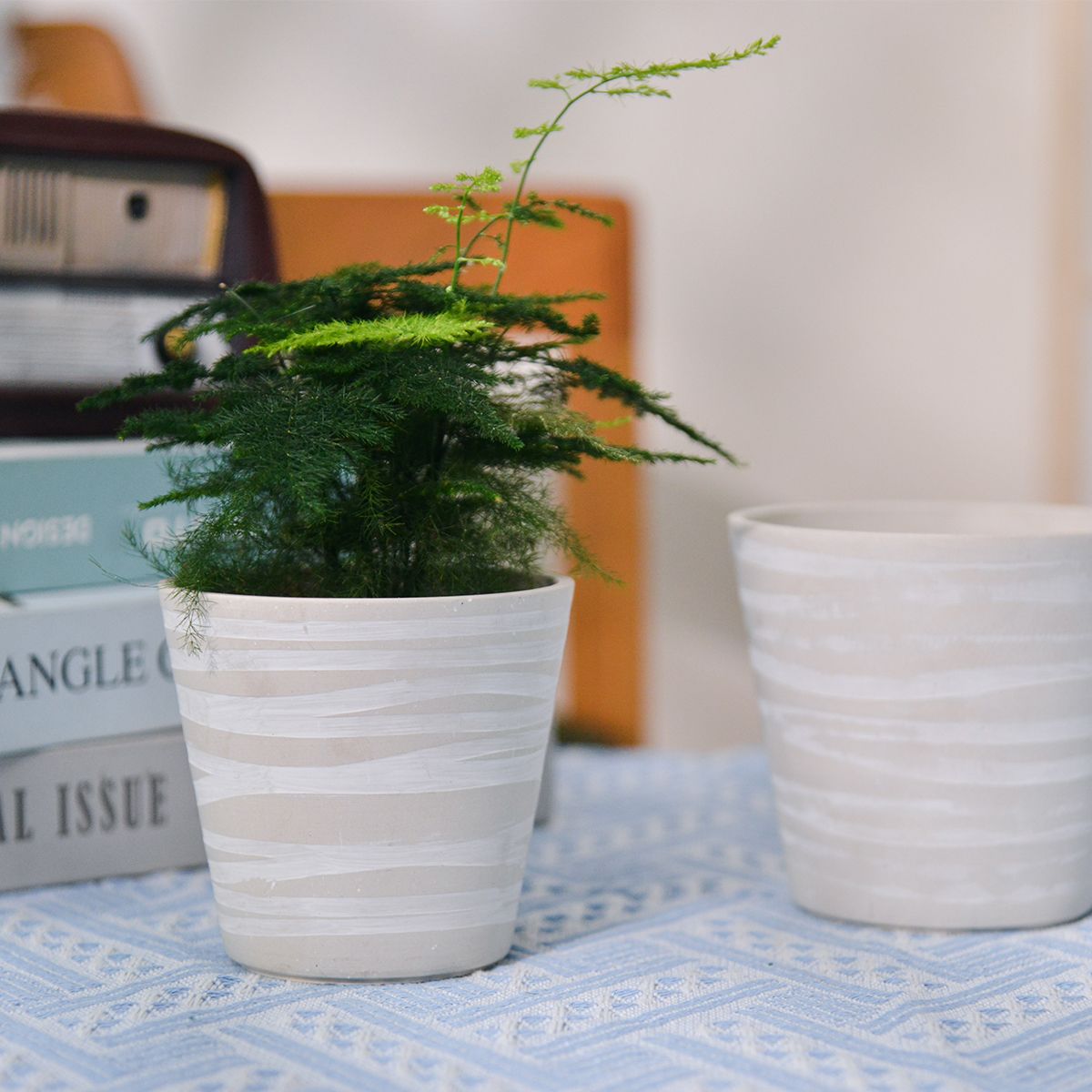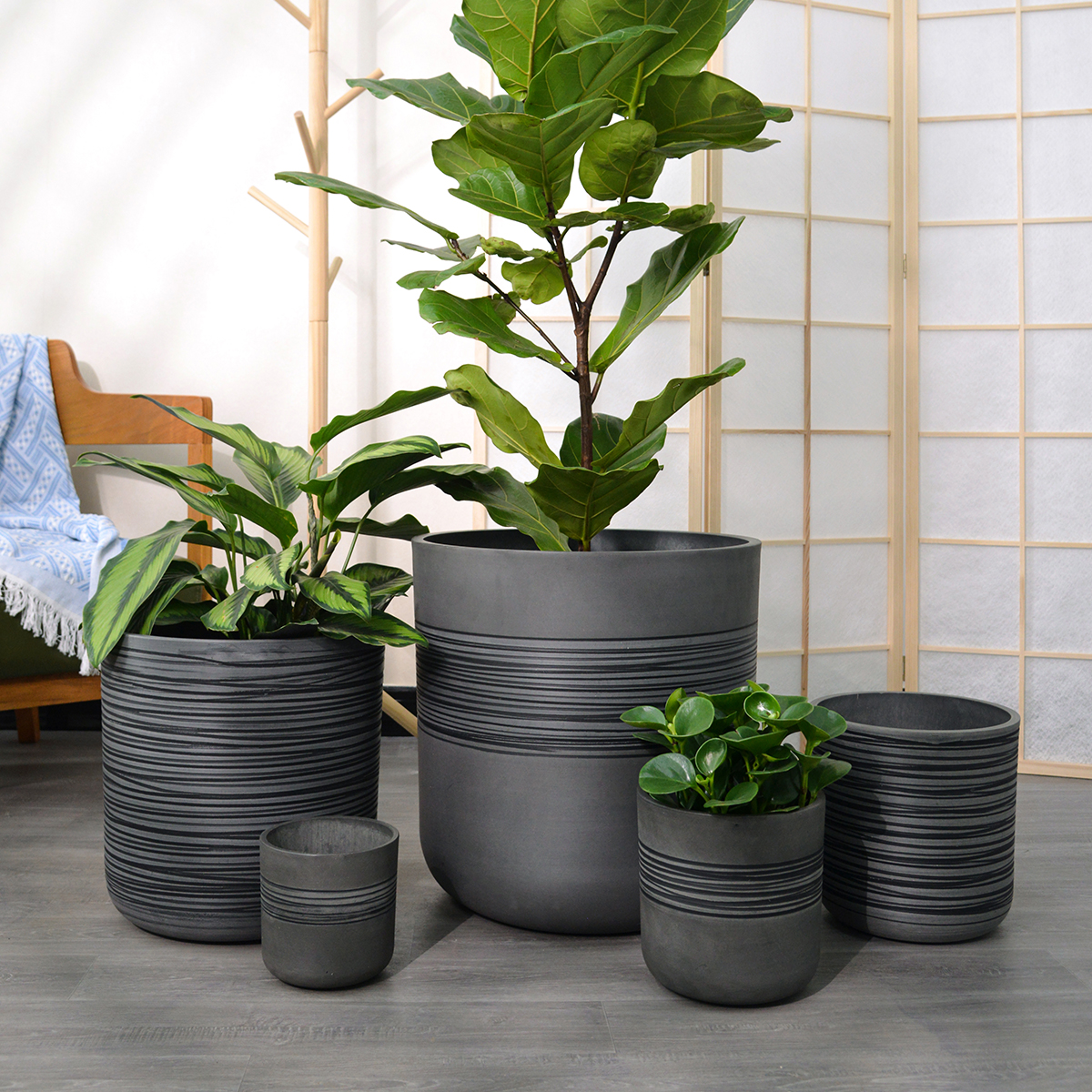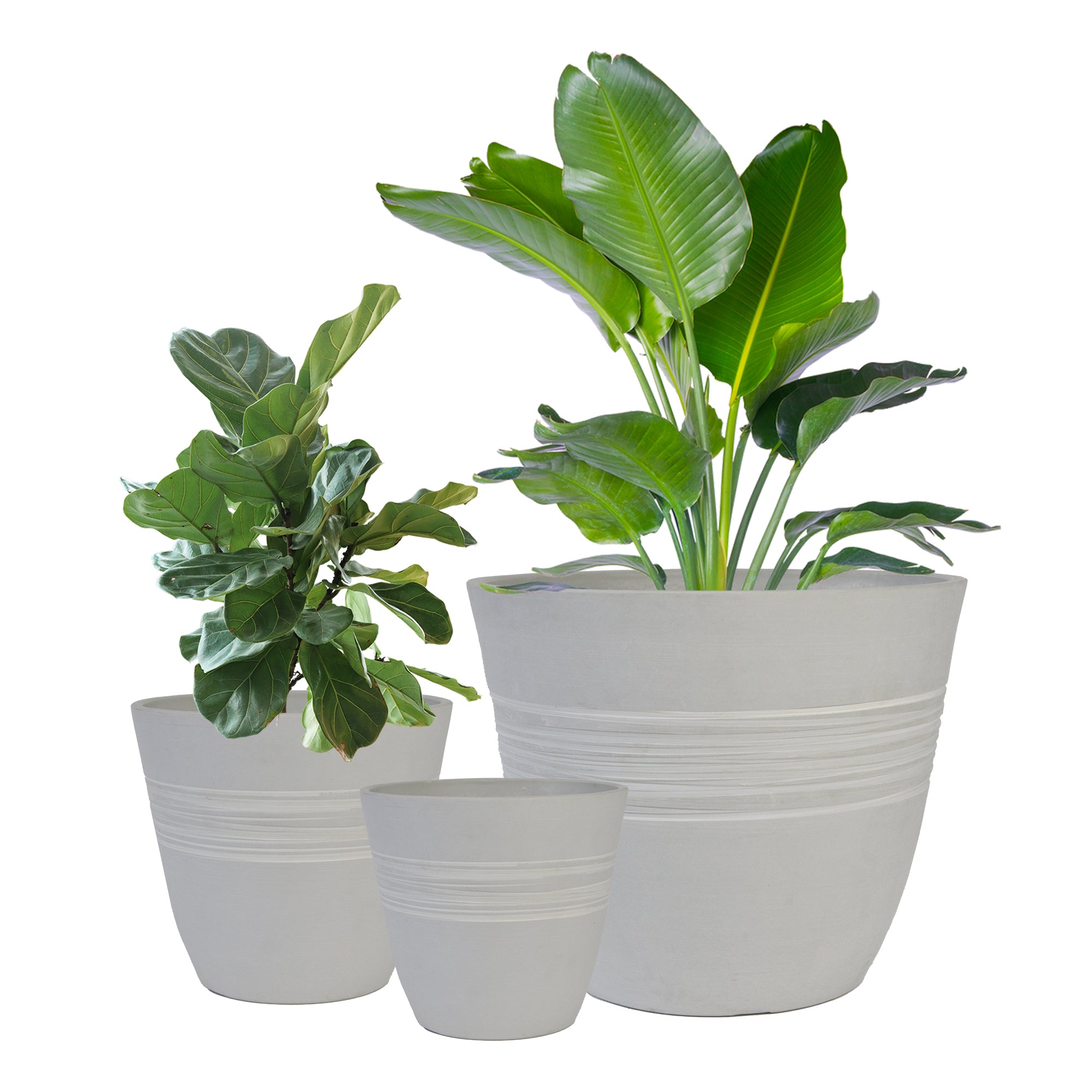Lantana in Pots: The Ultimate Guide to Growing Colorful Lantana Outdoors in Containers
Want to infuse your patio, balcony, or garden with vibrant clusters of colorful flowers that attract butterflies and hummingbirds all season long? Lantana, often called Shrub Verbena, is an incredibly easy and rewarding choice for outdoor container gardening. Celebrated for their long-lasting displays of brightly colored flower clusters in shades of yellow, orange, red, pink, purple, and white, and their heat and drought tolerance, Lantanas are perfect for adding low-maintenance brilliance to sunny outdoor spaces. This comprehensive guide will provide you with everything you need to know to grow Lantana successfully in outdoor pots, from selecting the best varieties and containers to mastering essential care techniques for a season filled with Lantana color.
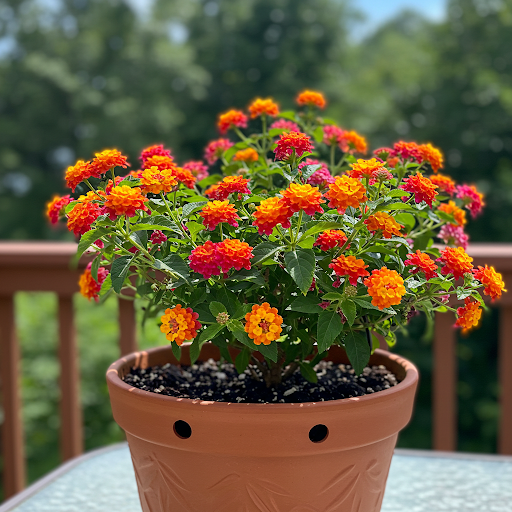
Lantana
What are Lantana (Shrub Verbena)?
Lantana, commonly known as Lantana or Shrub Verbena, is a genus of flowering plants in the Verbenaceae family (verbena family). Native to tropical regions of the Americas and Africa, Lantanas are popular annuals and perennialsgrown for their abundant clusters of small, brightly colored flowers and long blooming season. Lantana flowers are famous for their vibrant, multi-colored clusters, often displaying a mix of colors within a single flower head, such as yellow, orange, red, pink, purple, and white. The flower clusters are typically rounded or dome-shaped, composed of many tiny, tubular florets. Lantana plants exhibit diverse growth habits, from compact and bushy to trailing and spreading, and even shrub-like, ranging in height from under a foot to over 6 feet tall, depending on the species and variety. They are known for their intense colors, exceptionally long blooming season (spring to frost), heat and drought tolerance, sun-loving nature, and strong attractiveness to butterflies, hummingbirds, and other pollinators, making them an invaluable addition to gardens and containers, especially for adding continuous summer color and attracting wildlife in hot climates.
Are Lantana (Shrub Verbena) Good for Outdoor Pots?
Yes, Lantana (Shrub Verbena) are exceptionally well-suited for outdoor pots and container gardening. Their exceptionally long blooming season, heat and drought tolerance, adaptable growth habits, and intense, vibrant flower colors make them ideal for filling pots, window boxes, hanging baskets, and mixed container arrangements with dazzling, multi-colored blooms. Lantanas thrive in sunny locations and bloom profusely throughout the warm season, providing an exceptionally long-lasting and cheerful floral display in containers, even with minimal watering. Their incredibly low-maintenance nature and striking, pollinator-attracting blooms make them a fantastic and rewarding choice for container gardens of all styles, especially for adding vibrant color to patios, balconies, and decks in hot, sunny locations. Growing Lantana in pots also allows you to easily move them to optimal locations and control their growing conditions, especially drainage, which is important in cooler, wetter climates.
Ideal Growing Conditions for Lantana in Pots:
Types of Lantana for Pots: Many Lantana varieties are excellent for pots, but consider your desired growth habit, flower color, and size when choosing:
- Trailing Lantana: (Lantana montevidensis, Lantana sellowiana) – Naturally trailing and spreading habit, typically under 1 foot tall but spreading 2-4 feet wide. Ideal for hanging baskets, window boxes, and cascading over the edges of pots. Known for their cascading growth and profusion of smaller flower clusters. Excellent for creating overflowing, colorful displays in hanging baskets and containers. Look for varieties like ‘Purple Trailing’, ‘White Trailing’, ‘Confetti’, and ‘ गोल्ड Mound’.
- Compact Bush Lantana: (Lantana camara compact types, Lantana x hybrida compact varieties) – Bushy and more upright, but remaining relatively compact, typically 1-3 feet tall and wide. Suitable for small to medium pots, mixed containers, and general garden use. Offer a wide range of colors and bi-colors, and a more rounded, mounded habit. Look for varieties like ‘Bandana Series’, ‘Landmark Series’, ‘ Patriot Series’, and ‘Bloomify Series’.
- Upright Bush Lantana: (Lantana camara standard types, Lantana urticoides) – More upright and shrub-like growth, reaching 3-6 feet tall or more in warmer climates, but can be kept smaller in pots with pruning. Best suited for larger pots as focal points or back-of-container plants in mixed arrangements. Lantana camara(Common Lantana) and Lantana urticoides (Texas Lantana) offer taller, shrubby growth and are excellent for adding vertical interest and a more substantial presence to larger container gardens. Choose taller varieties for larger pots or for a backdrop in mixed containers. Regular pruning can help maintain a desired size and shape in pots.
- Dwarf Bush Lantana: (Lantana camara dwarf cultivars, Lantana x hybrida dwarf types) – Very compact and small in stature, typically under 1 foot tall and wide. Ideal for small pots, miniature gardens, and tight spaces. Known for their tiny size and dense, mounded habit. Excellent for very small containers, fairy gardens, and as fillers in mixed arrangements. Look for varieties like ‘Little Lucky Series’, ‘Patio Fire’, ‘Tiny Clusters’, and ‘Samantha’.
- Novelty Colors & Forms: (Lavender, cream, variegated foliage, color-changing blooms) – Beyond the classic warm colors, explore varieties in cooler shades like lavender and cream, as well as those with variegated foliage or flowers that change color as they mature. Many Lantana x hybrida cultivars offer unique colors and foliage. Look for varieties like ‘Lavender Popcorn’, ‘Cream Carpet’, ‘Radiation’ (variegated), ‘Confetti’ (multi-colored blooms), and ‘ изменяется’.
Light: Lantana thrive in full sun. They need at least 6-8 hours of direct sunlight per day to bloom profusely and maintain vibrant colors and healthy, compact growth. Choose a sunny location for your Lantana containers, such as a south-facing patio, balcony, or garden bed. In shady locations, Lantanas will produce fewer blooms, become leggy, and may be more susceptible to diseases like fungal issues. Full sun is essential for optimal flowering, intense colors, and robust growth.
Soil: Lantana need well-draining soil that is moderately fertile to lean. Use a high-quality potting mix specifically formulated for containers or flowers. Amend potting mix with perlite or vermiculite to improve drainage and aeration, especially for heavier potting mixes. Lantanas are quite drought-tolerant and prefer soil that is not constantly soggy. Avoid heavy, compacted soil or garden soil in pots, as they can become waterlogged. A slightly acidic to neutral pH (around 6.0-7.0) is ideal for most Lantana. Excellent drainage is crucial to prevent root rot, especially in pots.
Watering: Lantana are exceptionally drought-tolerant once established, and prefer slightly dry to moderately moist soil. Water thoroughly when the top inch of soil feels dry. Water deeply until water drains out of the drainage holes. Allow the soil surface to dry out somewhat between waterings. Avoid overwatering and soggy soil, which can lead to root rot. Lantanas are more tolerant of underwatering than overwatering. Watering frequency will depend on weather conditions, light levels, pot size, and plant size. During hot, sunny, or windy weather, you may need to water more frequently, especially for young plants and during peak bloom. Check soil moisture regularly and adjust watering accordingly. Water at the base of the plant to keep foliage and flowers dry and help prevent fungal diseases.
Temperature: Lantana are warm-weather plants that thrive in hot temperatures. They perform best in temperatures between 70°F to 90°F (21°C to 32°C) and even hotter. They are very heat-tolerant and bloom most profusely in warm to hot summer conditions. Lantanas are frost-tender and are typically grown as annuals in colder climates (USDA zones below 9-10). In USDA zones 9-11, some Lantana varieties can be perennials and may overwinter outdoors, especially shrubby types. Potted Lantanas are easy to move indoors to protect from frost in colder zones if you wish to overwinter them.
Fertilizer: Lantana are light feeders and generally do not require rich soil or heavy fertilization. Over-fertilizing can actually lead to leggy growth, reduced flowering, and weaker colors. Fertilize sparingly, if at all, especially when grown in pots. If desired, you can apply a very dilute, balanced liquid fertilizer (e.g., 10-10-10 or 20-20-20) once or twice during the growing season, but often they perform perfectly well without any supplemental fertilizer, especially if using a good quality potting mix that contains some initial nutrients. Avoid high-nitrogen fertilizers, which can promote leafy growth at the expense of blooms. Lean soil conditions actually encourage stronger stems, more compact growth, and more abundant flowering in Lantana, as they are adapted to somewhat poor, well-drained soils.
Choosing the Right Pots for Lantana:
Suitable Pot Types: Lantana are adaptable to various pot types, including terracotta, ceramic, plastic, resin, and hanging baskets. Consider these factors when selecting pot types for Lantana:
- Terracotta Pots: Porous, allow excellent aeration and drainage, and aesthetically natural and classic. Terracotta is an excellent choice for Lantana as it helps prevent overwatering and promotes good root health, which is especially beneficial for drought-tolerant plants like Lantana. However, terracotta pots also dry out more quickly, so monitor soil moisture, especially in hot weather and for more moisture-loving varieties.
- Ceramic Pots: Available in many decorative styles, can add a decorative element to your container garden, and retain moisture reasonably well. Ensure good drainage. Choose based on your desired aesthetic and moisture retention needs. Glazed ceramic pots retain moisture better than unglazed terracotta.
- Plastic Pots: Lightweight, inexpensive, retain moisture well, and are available in various colors and styles. Excellent choice for Lantana, especially for moisture retention in sunny, hot locations, and for larger pots that need to be moved. Choose good quality plastic pots with drainage holes. Lighter colored plastic pots may heat up less in direct sun.
- Resin Pots: Lightweight, durable, available in various styles mimicking terracotta or ceramic, and offer a balance of drainage and moisture retention. A good alternative to heavy ceramic pots, and often more durable than terracotta or plastic.
- Hanging Baskets: Ideal for trailing Lantana varieties, allowing them to cascade beautifully. Choose hanging baskets with good drainage and sufficient depth to accommodate root growth. Line wire baskets with coco coir or sphagnum moss liners to help retain moisture.
Drainage: Excellent drainage is essential for Lantana to prevent root rot. Ensure your chosen pot has drainage holes at the bottom. Avoid pots without drainage holes. Adding a layer of gravel or pot shards at the base of the pot is generally not necessary if using a well-draining potting mix, but can be done for extra precaution, especially in heavier pots. Elevating pots slightly on pot feet or bricks can further improve drainage and air circulation around the base.
Pot Size: Choose pot sizes appropriate for the type and mature size of the Lantana you are planting, and the desired display. Lantana root systems are moderately sized and need adequate space for healthy growth.
- Trailing Lantana: For trailing Lantana, pots or hanging baskets that are 10-12 inches in diameter and at least 8 inches deep are suitable for individual plants. For window boxes, allow about 12-18 inches of spacing per plant for trailing varieties to spread.
- Compact Bush Lantana: For compact bush Lantana, pots that are 10-14 inches in diameter and at least 10 inches deep are suitable for individual plants. For fuller displays or mixed plantings, use pots that are 14-18 inches or larger, or larger tubs.
- Upright Bush Lantana: For upright bush Lantana varieties, use pots that are 14-18 inches in diameter or larger and at least 12-14 inches deep for individual plants, or larger tubs or raised beds for multiple plants. Taller Lantana need more root space and stability, and larger pots will help prevent them from becoming top-heavy.
Color and Style: Choose pot colors and styles that complement your Lantana blooms and your outdoor décor. Brightly colored pots can enhance the vibrant flower colors of Lantana. Terra cotta pots offer a natural, Mediterranean or Southwestern style that complements Lantana’s heat-loving nature. Rustic or weathered pots can create a more casual, cottage garden look. Neutral pots in white, gray, or black can provide a clean and versatile backdrop and allow the Lantana flower colors and patterns to stand out. Consider the overall style of your patio or garden and choose pots that harmonize with the surroundings.
Essential Care Tips for Thriving Lantana in Outdoor Pots:
- Watering: “Water When Top Inch of Soil is Dry, Avoid Overwatering”. Water thoroughly when the top inch of soil feels slightly dry. Water deeply until water drains from drainage holes. Allow soil surface to dry slightly between waterings. Avoid overwatering and soggy soil. Water more frequently during hot, sunny, or windy weather, especially for young plants and during peak bloom.
- Sunlight: Provide Full Sun (6-8+ Hours Daily). Place Lantana pots in a location that receives full sun for best blooming, vibrant colors, and strong growth.
- Fertilizing: Fertilize Sparingly, If At All. Lantana are light feeders and generally do not need much fertilizer. Fertilize very sparingly, if at all, with a very dilute, balanced liquid fertilizer only once or twice during the growing season if desired. Avoid over-fertilizing.
- Deadheading (Self-Cleaning, Minimal Deadheading Needed): Modern Lantana varieties are mostly self-cleaning and do not require deadheading to promote continuous bloom. Spent flower clusters will typically dry and fall off on their own. If desired, you can lightly trim off spent flower clusters to maintain a tidier appearance, but it is not essential for reblooming.
- Pruning (To Shape & Control Size): Lantana can be pruned to shape plants, control size, and encourage bushier growth. Prune in late winter or early spring before new growth begins to reshape plants and remove any dead or crossing branches. During the growing season, you can lightly trim back plants if they become too leggy or overgrown. Pinch back stem tips of young plants to encourage branching.
- Overwintering (Protect from Frost in Cold Climates): In colder USDA zones where Lantana are not hardy, potted Lantana can be overwintered indoors. Before the first frost, move pots to a bright, cool location such as a sunroom, unheated garage, or basement. Reduce watering significantly during winter dormancy, watering only sparingly to prevent the soil from completely drying out. In spring, after the last frost, gradually acclimate plants back to outdoor conditions before placing them back in their sunny summer location.
- Pest and Disease Control: Lantana are generally relatively pest and disease-resistant, but monitor for occasional pests like aphids, whiteflies, and spider mites. Fungal diseases like powdery mildew or leaf spot can occur, especially in humid conditions or with poor air circulation. Ensure good air circulation by spacing plants adequately, avoid overcrowding, water at the base of the plant, and provide good drainage. Treat any pest or disease issues promptly with insecticidal soap, horticultural oil, neem oil, or appropriate fungicides if necessary.
Popular Lantana Cultivars for Pots (by Growth Habit/Color/Size):
- Trailing Lantana: ‘Purple Trailing’ (purple), ‘White Trailing’ (white), ‘Confetti’ (multi-colored), ‘ गोल्ड Mound’ (golden yellow), ‘Irene’ (orange-red)
- Compact Bush Lantana: ‘Bandana Series’ (various colors, compact), ‘Landmark Series’ (various colors, mounded), ‘ Patriot Series’ (red, white, yellow, compact), ‘Bloomify Series’ (various colors, very floriferous), ‘Little Lucky Series’ (dwarf, various colors)
- Upright Bush Lantana: Lantana camara (Common Lantana, shrubby species, various colors), Lantana urticoides(Texas Lantana, shrubby, orange-yellow), ‘Miss Huff’ (hardy shrubby pink-yellow), ‘New Gold’ (golden yellow shrubby)
- Dwarf Bush Lantana: ‘Little Lucky Series’ (various dwarf colors), ‘Patio Fire’ (red-orange dwarf), ‘Tiny Clusters’ (mixed colors dwarf), ‘Samantha’ (yellow dwarf variegated), ‘Alba’ (white dwarf)
- Novelty Colors & Forms: ‘Lavender Popcorn’ (lavender-white), ‘Cream Carpet’ (cream trailing), ‘Radiation’ (variegated foliage), ‘Confetti’ (multi-colored blooms), ‘ изменяется’ (color-changing blooms), ‘Sunrise Rose’ (pink and yellow bi-color)
- Seed Mixes: ‘Mixed Colors Lantana Seeds’, ‘Trailing Lantana Seed Mix’, ‘Dwarf Lantana Seed Mix’, ‘Heatwave Lantana Mix’, ‘Butterfly Flower Seed Mix (Lantana blend)’
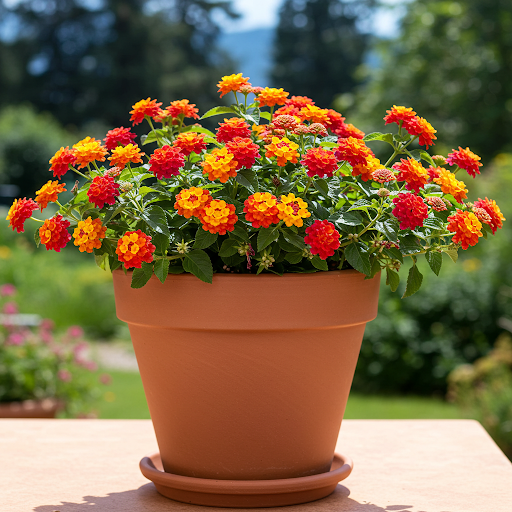
Lantana
In Summary:
Growing Lantana (Shrub Verbena) in outdoor pots is a wonderfully rewarding way to add masses of vibrant, long-lasting color and attract butterflies and hummingbirds to your patios, balconies, and gardens. Their exceptionally long blooming season, diverse colors and habits, heat and drought tolerance, and relatively easy-care nature make them a perfect choice for container gardeners seeking cheerful, pollinator-friendly plants that thrive in sunny, hot locations. By providing full sun, well-draining potting mix in pots with drainage, watering appropriately and avoiding overwatering, fertilizing sparingly if at all, and providing minimal care, you can easily cultivate thriving Lantana plants in pots and enjoy their vibrant Lantana color and wildlife attraction from spring until frost, year after year for perennial varieties in warmer zones, or as cheerful annuals everywhere else.
For more detailed botanical information and to explore the diverse world of Lantana species and cultivars, you can visit the Wikipedia page on Lantana.
Important Note: Lantana plants contain compounds that are considered mildly toxic if ingested, especially the unripe berries. Keep plants out of reach of young children and pets who may be inclined to eat them. The primary care benefits of Lantana in pots are their exceptionally long blooming season, vibrant and diverse flower colors, and strong attraction to butterflies, hummingbirds, and other beneficial pollinators, making your outdoor spaces come alive with color and wildlife activity for many months. With these simple care practices, you can enjoy a season filled with the vibrant beauty and ecological value of Lantana in your outdoor containers.
13 inch Planter for Indoor Plants, Set of 2 Modern Decorative Plant Pots with Drainage Hole, Cute Bowl Shape Flower Pots
By greenship-seo|2025-04-10T07:41:46+00:00January 10, 2025|Categories: Hand-carving Series|Tags: Decorative Flower Pots, Self-Watering Pots|
KC2-11VH
By greenship|2024-08-16T06:19:28+00:00August 16, 2024|Categories: Hand-carving Series|
KC2-GS
By greenship|2024-08-16T06:30:21+00:00August 16, 2024|Categories: Hand-carving Series|
20T
By greenship|2024-08-13T06:42:22+00:00August 13, 2024|Categories: Hand-carving Series|
k2-21G
By greenship|2024-08-13T06:17:26+00:00August 13, 2024|Categories: Hand-carving Series|
Plant Pots 6 inch 8 inch 12 inch for Indoor Outdoor Plants, Set of 3 Modern Decorative Planter with Drainage Hole, Decorative Flower Pots
By greenship-seo|2025-04-10T06:38:40+00:00January 16, 2025|Categories: Hand-carving Series|Tags: Decorative Flower Pots|

